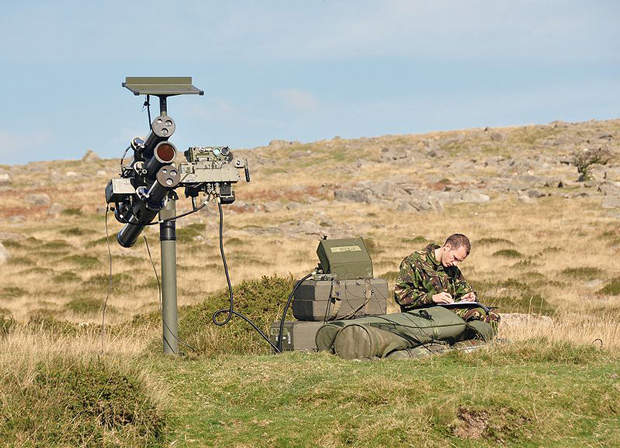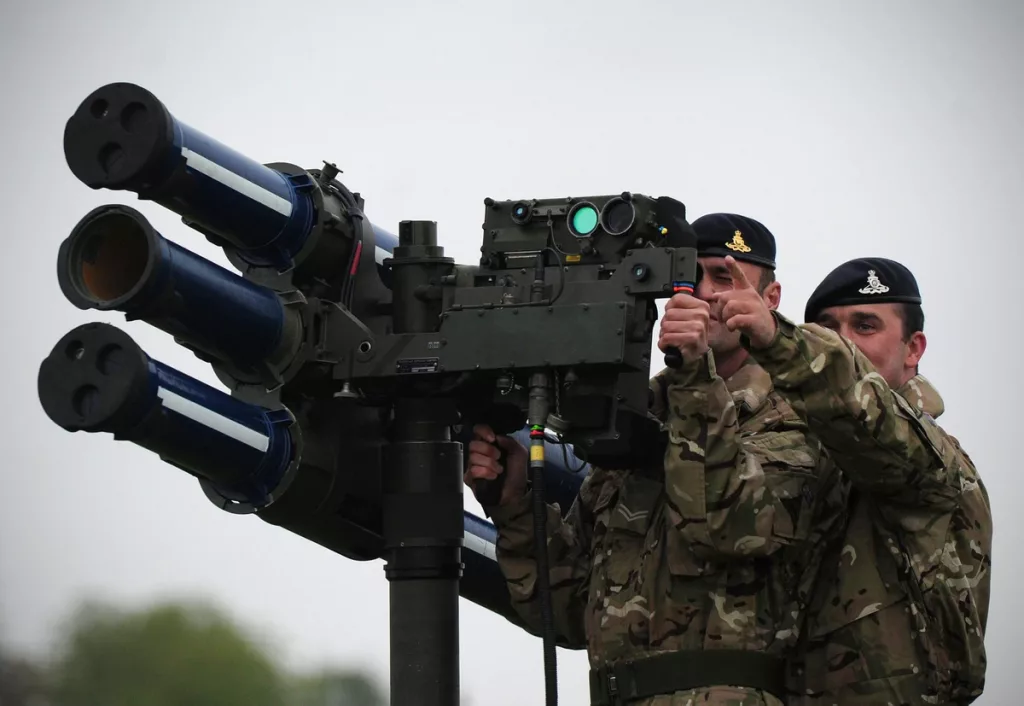The wars in Ukraine and other global conflict zones have highlighted the significant need for systems that can protect troops from aerial threats. Air defence systems are required to counter the threat from traditional methods of aerial attack, namely aircraft and helicopters, to new and emerging dangers on the battlefield, specifically drones and advanced missiles. In this blog we explore in more detail what the air defence landscape looks like today and the role that rugged computers play.

Air defence capabilities have seen a significant resurgence in recent years as the global security landscape has deteriorated and the threat from ‘peer competitors’ – a defence phrase for states that possess formidable military capabilities – has grown.
Russia and China are developing capabilities that can penetrate traditional air defence bubbles, including hypersonic weapons, while armed, tactical drones have emerged as a significant battlefield threat that can provide forces with mass and lethality at a reduced cost.
This resurgence is reversing a period of decline in Western air defence capabilities, the result of reduced defence spending in the years following the Cold War and the tactical realities of fighting non-state forces over the last three decades, including insurgencies that couldn’t threaten forces from the air.
Conflicts in the former Yugoslavia, Iraq and Afghanistan did not require Western forces to deploy advanced air defence systems, especially as they had air superiority in uncontested airspace, which negated any aerial threat. It was only during the latter parts of fighting the Islamic State in Syria and Iraq that the threat from armed drones – adapted commercial UAVs used to drop grenades – began to emerge.
Russia’s invasion of Ukraine changes everything
The west had a significant wake-up call when Russia invaded Ukraine in 2022. Not only did it show that Russia was an incredibly dangerous threat, but it showed that air defence was a critical asset for the armed forces and for protecting critical infrastructure.
In the opening phase of the invasion, Ukrainian air defence assets were able to deny Russian aircraft the ability to manoeuvre freely over its territory, severely impacting Russian operations. That has continued to this day, although Russia is still capable of carrying out heavy air strikes using long-range missiles and one-way attack drones (also called suicide drones).
With airspace being denied to larger crewed aircraft, both sides have resorted to using increasingly sophisticated drones, which can more easily evade air defence systems and provide significant effects against ground forces. This includes weaponised first-person-view (FPV) drones that are guided remotely by a skilled operator using targeting information from another drone, both of which are available commercially.
This type of drone warfare is now commonplace and will almost certainly be repeated in future conflicts.
What are air defence systems?
Air defence systems come in many shapes and sizes, from small ‘man-portable’ systems that can be carried by a soldier, all the way up to large systems that require transportation on vehicles.
The basic idea of ground-based air defence – or GBAD – is that a bubble is created around key strategic areas, and within this bubble there are multiple layers that can neutralise a threat.
Strategic-level capabilities can cover many miles and will be supported by long-range sensors – normally radars and passive detectors – and a command-and-control (C2) system that connects several systems together that feed into a command centre to coordinate a response.
Medium-range air defence systems are mobile assets that can be tactically deployed to bolster the bubble and intercept targets that may have penetrated the first layer.
Short-range air defence (SHORAD) systems, meanwhile, are critical assets for neutralising threats that have overcome both long- and medium-range systems and are presenting a clear and present danger for ground forces. These systems can leverage both missiles and machine guns, along with a range of sensors and guidance systems that ensure a target will be hit and neutralised before it strikes.
GRiD’s 2507 tablet was on display at the British Army’s inaugural GBAD Expo in July – watch more here: https://youtu.be/7DGi9zv7dTo

Rugged computers for air defence
GRiD Defence Systems is an expert in rugged, military-grade computer solutions for air defence programmes, from short-range standalone systems to vehicle-mounted missiles and sensors. We have a long history supplying companies that deliver market-leading air defence solutions, and we’re proud to contribute to the overall capability of the system.
GRiD’s rugged laptops and tablets act as a key interface for air defence systems, allowing users to view sensor feeds and fire effectors while on the battlefield. GRiD computers are completely software agnostic, meaning that customers can install their preferred C2 systems for optimum performance across air defence units.
One successful air defence project GRiD has provided its rugged solutions for is the Thales Lightweight Multiple Launcher (LML), which can fire the StarStreak or Lightweight Multirole Missile (LMM). This launcher is highly portable and can engage a variety of targets, including small targets such as UAVs. GRiD provides its GRiDCASE 2507 7” tablet for the system, allowing commanders to view in real-time what the operator can see through the sensor.
Case study: GRiD Defence Systems supplies Thales for Lightweight Multiple Launcher
GRiD can support the requirements of any air defence project, including unique interfaces, connectors and SWaP constraints; the latter can include being powered from an unfiltered DC supply such as a generator or vehicle. Interfaces such as High Definition-Serial Data Interface (HD-SDI) can also be integrated, and GRiD has experience on many programmes that requires this technology.
We can also meet strict electromagnetic compatibility (EMC) standards, which are critical for air defence systems, including DEF STAN 59-411 Land Class A, which is one of the world’s toughest EMC standards. GRiD computers additionally meet other strict military requirements, including environmental standards such as MIL-STD-810.
Conclusion
With the resurgence of ground-based air defence capabilities, GRiD is well positioned to provide high-quality rugged solutions for a range of air defence programmes. GRiD already has significant experience in this space and is a proud partner on many GBAD programmes with some of the leading defence companies in the world.
Drop an email to sales@griduk.com if you want to learn more.

